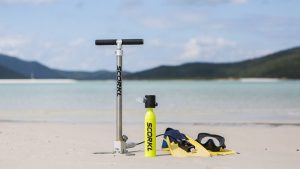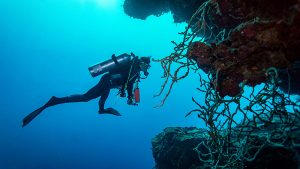Is the wetsuit thickness even something that you should worry about? Well, the answer is a resounding yes.
While you could go and just buy a good wetsuit on Amazon.com, you need to know that it will serve your needs very well. Apart from knowing your size, you also need to know that it is of the right thickness.
Many beginner scuba divers have ignored this consideration, and they found themselves very unhappy during their dive, probably having to end it before their planned time.
At the same time, you could be deceived by the sunny weather outside and you think that the sea has warmed up. That is rarely the case.
You see, the sea takes much longer to warm up. Thus, warm weather could have been with you for several weeks, but the ocean could still be very chilly cold for divers.
Whether you are buying a wetsuit for scuba diving, wetsuit for surfing, swimming, snorkeling or for kayaking, you need to know the thickness that will suit you best.
Is this your first time to buy a wetsuit? You will find some confusing figures about the right thickness to buy. Do not buy before you read this wetsuit thickness guide.
Wetsuit thickness is guided by a few things, one of them being the temperature of the water at your diving destination.
Thus, as you may have guessed, and rightly so, it is really a no brainer this one, but the colder the water the thicker the wetsuit should be.
Likewise, the warmer the water, the lighter/thinner the wetsuit should be.
If you are going for ice diving, it is an entirely different matter altogether. In such a case, you would need a dry suit. Also, many people prefer to keep dry with a drysuit when they go kayaking.
Table of Contents
Wetsuit thickness guide for you
Know what the wetsuit numbers mean
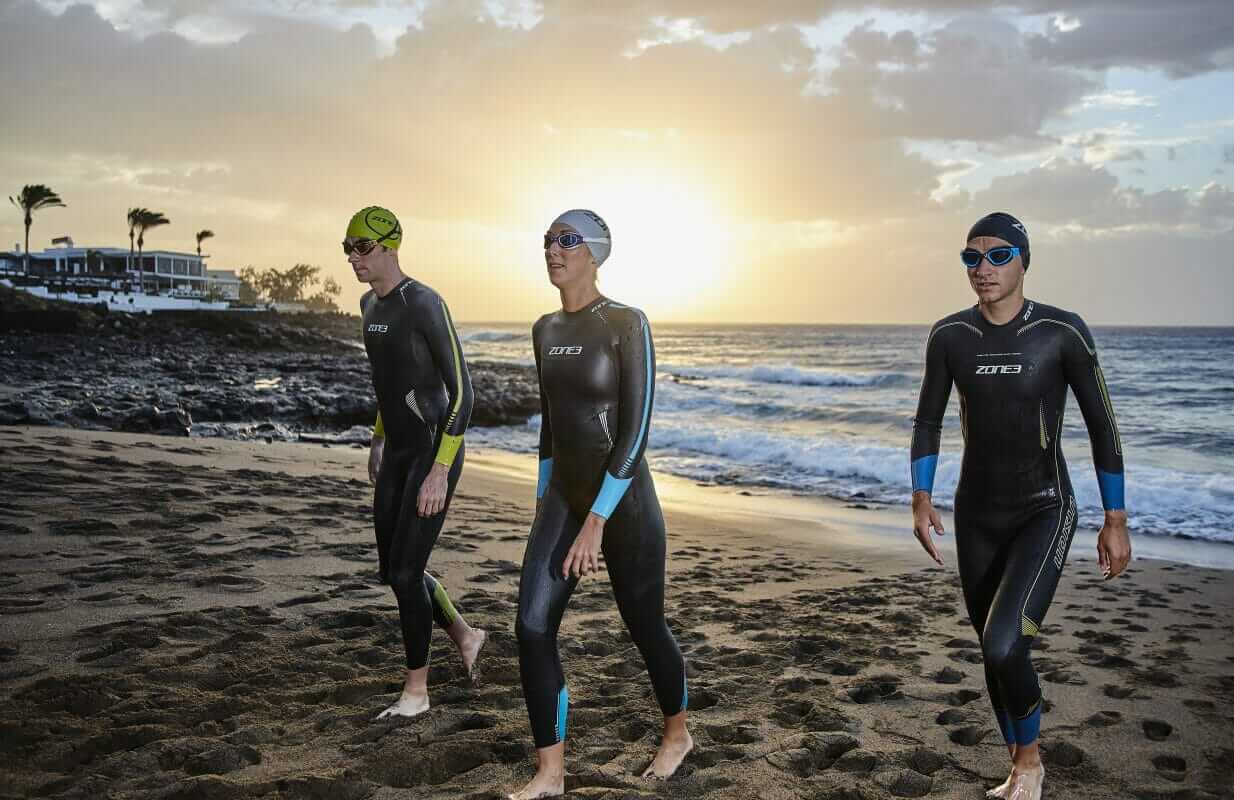
Often, when you buy your scuba diving, surfing or swimming wetsuit on Amazon.com or other online marketplaces, you will find some confusing numbers, well, at least if this is your first time to buy one.
However, do not fret at all as these numbers are quite easy to decipher. The first thing that you need to know is that wetsuit thickness is measured in millimeters (mm). 10mm makes 1cm (about 0.4 inches). So, 1mm is about 0.04 inches.
There are two numbers or more for any wetsuit. The two of them denote the thickness of the wetsuit. Well, you may be wondering why we need to have two numbers if a scuba diving wetsuit is 3mm.
The reason is that the wetsuit thickness varies. It does not have uniform thickness. It could be thicker on the front body and the torso, and thinner on the limbs.
Thus, if you find that a wetsuit for surfing is 4/3, it just means that on the torso, tummy and neck, the wetsuit is 4mm thick but on the legs and arms, it is 3mm thick. Really, it is that simple!
The reason why the wetsuit is made thinner for the limb areas is so that you can get more flexibility in the water. At the same time, it could mean that the wetsuit is 4mm on the bigger parts and 3mm on the armpits and crotch.
When you see the two numbers, just know that they mean the wetsuit is thick in certain places and thinner in others. Usually, the bigger number is for the biggest part thickness. Thus, if you are buying a 4mm wetsuit for scuba diving, you will find it indicated as 4/3.
If you are buying a 3mm wetsuit, it will be indicated as 3/2. And so on and so forth.
Wetsuit thickness guide for water temperature
Wetsuit thickness is determined by many things but the chief of them all is the water temperature. Please note, it is the water temperature and not the air temperature.
Here is a simple guide for you:
- 7mm wetsuits are suitable for diving in water temperatures of 10 degrees C and below
- 7mm wetsuits are also recommended for diving in 10 – 17 degrees C
In the above two cases, using a drysuit for scuba diving would be recommended too. So please take note of that.
- 3mm to 5mm wetsuit is suitable for diving in temperatures of 18 – 21 degrees C
- 3mm wetsuit is suitable for diving in temperatures of 22 – 25 degrees C
- 2mm dive suits are suitable for temperatures of 26 – 28 degrees C
- Bare skin diving is suitable for temperatures above 29 degrees C
Kindly note that these are just general guidelines. You will need to go to specifics most of the time when you are buying certain gear for your dive.
If you catch colds at the slightest exposure, it would be advisable to wear a thicker wetsuit. For example, if you are diving in water temperatures between 22 – 25 degrees C, you may opt for a 5mm or a 3mm full wetsuit as opposed to choosing the recommended 3mm/2mm wetsuit.
In some cases, you may also be advised not to dive at all. For instance, if you catch colds easily and the water temperature is at the range of 10 degrees C and below, do not dive. You could be exposing yourself to unnecessary risk.
Perhaps you can dive in a full body drysuit, but it would be better to wait.
Also note that the water could become colder the deeper you go.
From 2mm wetsuits to 7mm wetsuits
With water sports being very popular the world over, the manufacturers of scuba diving gear have made sure that everyone’s needs are met.
Wetsuit thickness starts at 2mm and goes all the way up to 7mm. If you will be diving in winter, you will need a thicker suit than someone who is diving in Dubai in Summer.
Certainly, the wetsuit thickness that you choose depends on the temperature of the water. It also depends on other factors.
If you have a good budget, you can get virtually any wetsuit that you want. However, if you have a small budget, then it means you would need to go for a wetsuit under that budget.
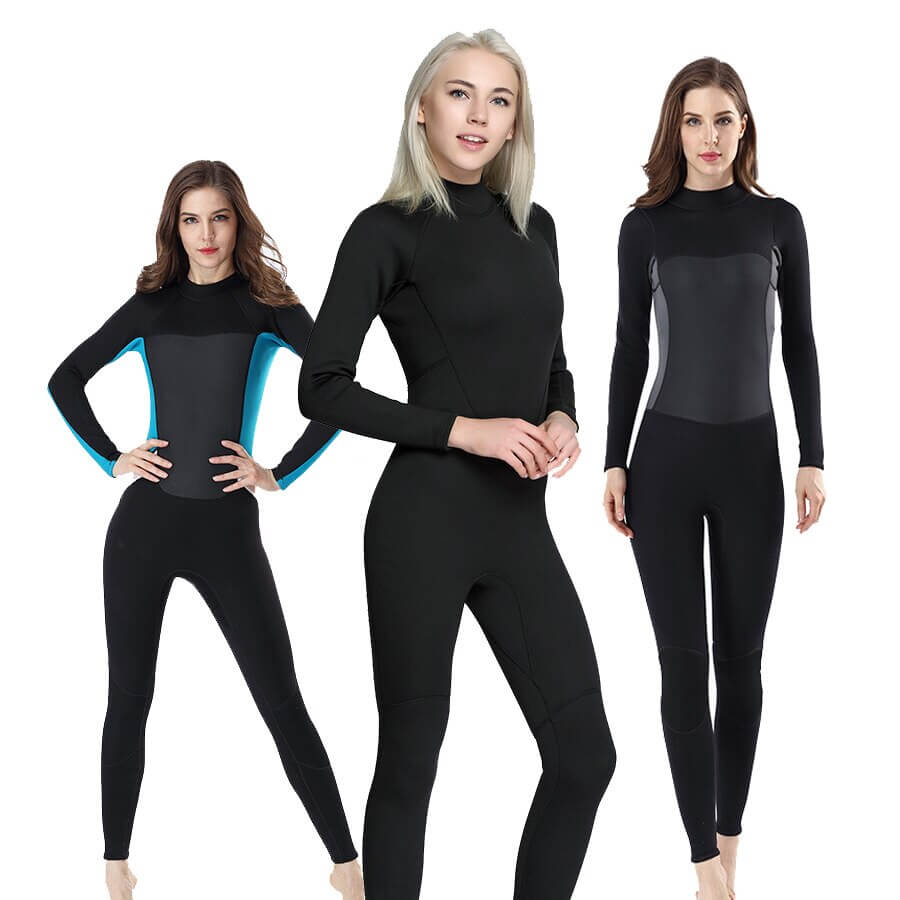
Thicker wetsuits have been made with more material. The opposite is also true of the thinner wetsuits. Thus, a 7mm wetsuit would cost more than a 2mm wetsuit. You can check reviews of these wetsuits on Amazon.com and see the advantages of each wetsuit thickness.
If you are not well prepared with the right scuba diving gear, this sport can turn dangerous for you. Thus, if you want to venture into the water with a 2mm suit and it has not been summer for several months, be ready for a serious chill.
Be smart, like most frequent divers. You can buy two wetsuits. A 3mm wetsuit is good for diving in warm waters or in the warm summer months. A 4mm to a 7mm wetsuit can be good for diving in the mild winter places to the serious winter ones.
If you have just come from summer where you were using a 3mm wetsuit and then start using a 5mm wetsuit, you will find it a bit bulky to move around with in the water. You will tire faster.
However, it is better to tire quickly in the water than to increase the risk of hypothermia. Thus, you may want to make your dive times shorter if you are diving in cold water.
When to buy a 4mm diving wetsuit
Some divers just prefer to buy a 4mm wetsuit, just one. If you ask them, they will tell you that such a suit would be wearable in summer, and it would also be tolerant enough for cold water diving.
However, note that such a wetsuit for scuba diving is mostly appropriate for people that like to dive in the warmer months only.
In warm waters, a thinner wetsuit is preferred because it reduces exhaustion. It also reduces body heat generation and so, air allowing, you can stay longer in the water.
Note that while the 4mm wetsuit might be good for spring and summer diving, you may have to buy a thicker one for diving in fall and winter.
It does not matter how resistant to catching cold you are, but cold water can be numbing and most of the time, the 3mm or 4mm suits do not tend to do a good job at keeping you warm on a cold water dive.
Shorty wetsuit vs. full wetsuit
This is another important consideration in the wetsuit thickness guide. You would choose to wear a shorty or a full wetsuit depending on the water temperature. Perhaps your preference could also come in depending on what you like to wear, but the water temperature plays the biggest role.
In summer, you can choose either a 2mm full wetsuit or a shorty wetsuit. Either will be suitable for your diving protection. 2mm is quite thin and it will allow you ample and flexible movement in the water. The thicker a wetsuit is, the heavier it is and the more it tires you out.
When diving in extremely cold water, you will also want to wear a hood of the same thickness as the wetsuit to protect your head and neck.
The other gear that you must wear includes scuba diving gloves and scuba diving boots. All of them are made of neoprene – the standard material for scuba diving wearables.
Shorty wetsuits are best for warm water diving. Full wetsuits, complete with scuba booties and gloves, sometimes even hoods are best for cold water/weather diving.
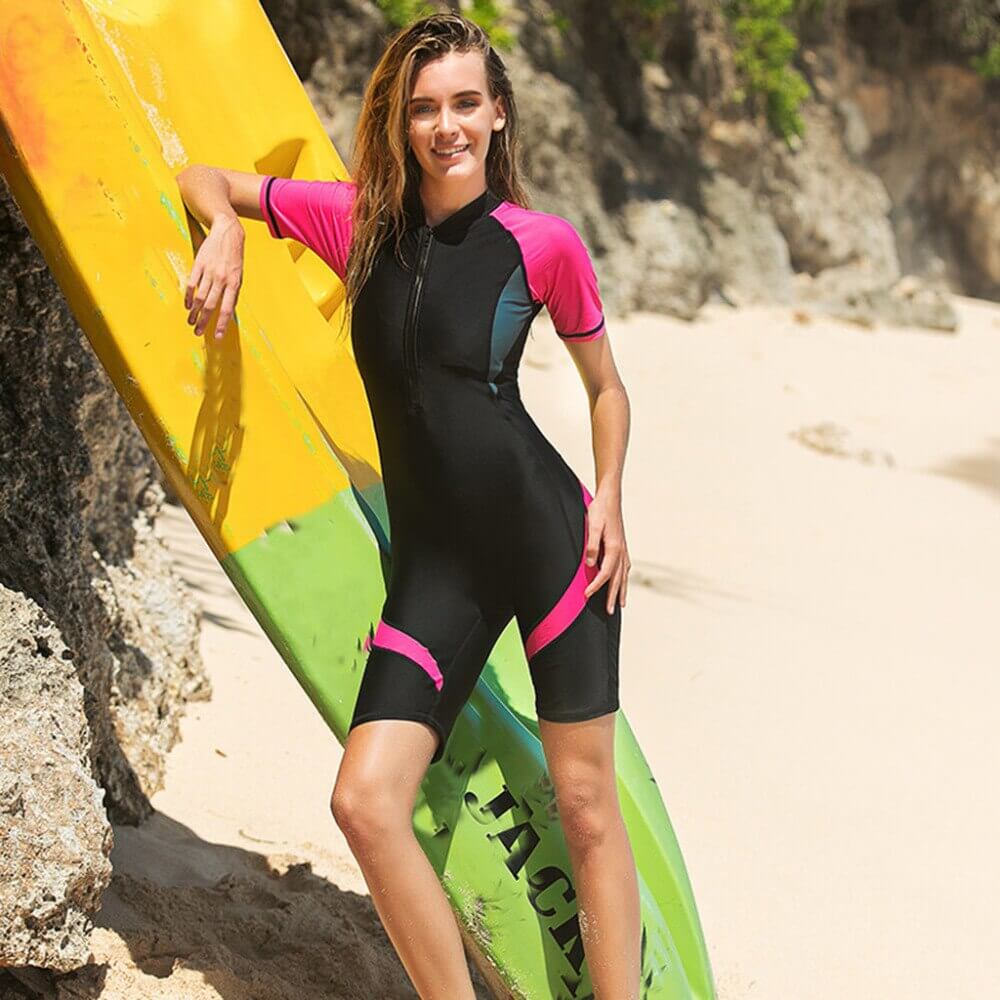
Sealed or unsealed wetsuits?
How warm or cold you get when scuba diving does not depend on the thickness of the wetsuit alone. It also depends on how watertight the seams are.
Not to be confused here … wetsuits are not meant to keep you dry. What happens is that when you get in the water, a thin layer of water is trapped between the wetsuit and your skin. This layer of water is then warmed by your body heat.
The layer of warm water will act as a buffer zone between your body and the cold water outside. This means that no warmth will escape and at the same time, no cold water will come in.
That is how wetsuits work!
Once again, this depends on how warm you want to be in the water. If for diving in cold water, the seams should be taped and sealed. In fact, the seams for wetsuits that are going to be used in low water temperatures are glued, sealed and blindstitched. Blindstitching means that the needle does not penetrate to the other side and as a result, it does not let in water at all.
Flatlock stitching can be done on wetsuits that are going to be used in warm waters, or that are utmost 3mm thick. As the name suggests, this flatlock stitch that lies flat on your body, causing you no discomfort at all. However, note that this kind of stitching may allow in a bit of water.
Fitting your wetsuit
It is very important that your wetsuit fits very well. There must be no air pockets, sags and such on the back, front or anywhere. Besides, the wetsuit should not lump or leave space under the armpits or on the crotch. It must fit snugly, everywhere, like a second skin.
If it does not fit properly, the wetsuit is going to deter your movements. It is going to make you spend more effort than you should to swim in the water. Even when you dive, you still have to move from place to place. Unless you are using an underwater scooter, you need to swim.
To know whether your wetsuit fits nicely, just stretch out when you wear it on the beach. There should be no notable restriction when you stretch your arms above your head.
Squat, stretch your legs and find out whether the suit leaves any spaces between it and your body. If it does, it is not the right fit. Again, if it is too restricting, it is not the right fit.
When you order your wetsuit from Amazon.com, you should check whether it is covered by a return policy so that you can return it if it does not work.
Conclusion
You have seen that there is quite more than meets the eye when it comes to keeping warm when scuba diving. Thus, it is paramount that you buy the right wetsuit. It should fit just right and the seams should keep water out completely, of course depending on the temperature of the water at your diving destination. Hopefully, this wetsuit thickness guide will help you clear the confusion about the wetsuit numbers.


